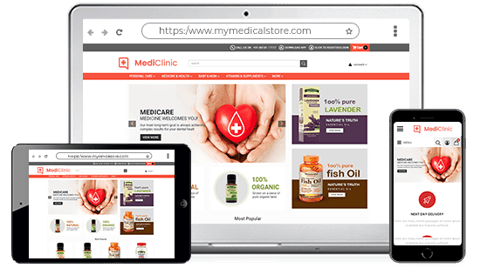Understanding the Cost Savings of Subscription Based Healthcare for Families
Understanding the Cost Savings of Subscription Based Healthcare for Families
Blog Article
The Rise of Subscription-Based Health Care and Its Influence On Client Care
As health care progresses, the subscription-based design is getting grip, promising to reinvent individual care by offering predictability and access. The possibility for these models to reshape health care delivery increases pressing concerns concerning their long-lasting sustainability and inclusivity. Are these subscription solutions the future of healthcare, or do they take the chance of leaving prone populations behind?
Comprehending Subscription Health Care Models
Realizing the concept of membership healthcare designs involves taking a look at a transformative approach to medical solutions that emphasizes cost and access. These designs, usually described as direct medical care (DPC) or concierge medicine, have actually arised as innovative options to typical fee-for-service healthcare systems. Registration healthcare enables clients to pay a set monthly or yearly charge for a specified collection of medical solutions, which may consist of unlimited office visits, routine examinations, and standard laboratory examinations, without the need for conventional insurance policy payment.
The structure of subscription health care designs is created to simplify patient care by removing third-party payers and intricate billing codes, thus minimizing management problems. Medical care providers can concentrate a lot more on person treatment, cultivating more powerful patient-provider connections. This design likewise promotes preventative care by encouraging normal gos to, as the economic obstacle of per-visit fees is eliminated.
The membership design typically equips doctor to handle smaller patient panels, enabling more customized care. It straightens economic rewards with client health end results, as carriers are inspired to maintain person contentment and health. Generally, comprehending subscription medical care designs requires identifying their prospective to reshape just how care is supplied and accessed.
Benefits for People and Suppliers
For carriers, subscription-based versions offer the opportunity to deepen patient-provider relationships. With a stable income stream, health care experts can devote more time to each client, resulting in a much more individualized and complete treatment experience. This design likewise reduces dependence over person volumes, reducing burnout and improving task contentment. In addition, the focus on precautionary care within subscription strategies can cause much better client end results and reduced lasting medical care expenses. By concentrating on constant care, companies can address concerns before they escalate, eventually benefiting the medical care system as a whole by decreasing the burden on emergency situation and acute treatment services.
Concerns and challenges
While subscription-based healthcare versions existing many advantages, they likewise come with a set of challenges and concerns that must be addressed. This elevates moral concerns regarding equitable accessibility to health care solutions.
Financial sustainability of subscription-based versions is one more concern. Companies should balance the set earnings from subscriptions with the variable prices of medical care services, which may rise and fall because of unexpected medical demands. This can produce stress to restrict services or boost fees, possibly impacting client complete satisfaction and care quality.
In addition, regulatory oversight of subscription-based healthcare designs is still progressing. Addressing these challenges is essential for the equitable and successful implementation of subscription-based medical care.
Effect on Patient-Doctor Relationships
One considerable influence of subscription-based health care models on patient-doctor connections is the capacity for improved continuity and customized care. By adopting a subscription model, doctors can take care of a smaller sized person panel, enabling even more specialized time with each person. This boosted accessibility promotes a deeper understanding click reference of a patient's clinical background, way of life, and preferences, enabling more customized therapy plans and interventions.

However, it is necessary to recognize that while subscription-based designs might profit those that can manage them, they can unintentionally broaden healthcare disparities. Clients who are unable to join these models may experience decreased access to customized treatment, potentially influencing their relationships with doctor. Hence, while the membership model uses promising benefits for patient-doctor relationships, it likewise poses difficulties that need to be dealt with to ensure fair medical care gain access to.
Future of Medical Care Access

The role of modern technology can not be forgotten in this change. Telemedicine systems and digital wellness documents facilitate seamless communication between patients and health care carriers, damaging down logistical and geographical obstacles. Additionally, advancements in expert system and data analytics can better individualize treatment by anticipating client needs and optimizing therapy strategies.
Nonetheless, the future of healthcare access also offers difficulties, such as guaranteeing equity throughout different socio-economic teams. Policymakers and doctor must work together to connect the digital divide, ensuring that subscription-based versions stay cost effective and go now inclusive. As these systems develop, they hold the guarantee of making medical care a lot more easily accessible, effective, and patient-centric.
Verdict
Subscription-based healthcare designs are improving person treatment by offering a stable expense framework and improving accessibility. The rise of subscription-based healthcare urges proactive patient engagement, which has the potential to enhance person end results and satisfaction, signaling a transformative shift in health care shipment.
As healthcare evolves, the subscription-based model is acquiring traction, promising to reinvent person treatment by using predictability and availability.Subscription-based healthcare designs provide distinct benefits for both service providers and patients, boosting why not try this out the overall healthcare experience.As medical care systems progress, the future of healthcare gain access to often hinges on the assimilation of innovative versions and innovations.Subscription-based healthcare versions are improving client care by giving a steady expense structure and enhancing accessibility. The surge of subscription-based health care urges positive patient interaction, which has the potential to enhance patient outcomes and contentment, indicating a transformative change in healthcare shipment.
Report this page